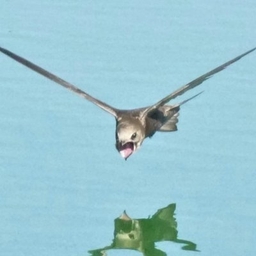
Mark Cocker
Columnist at The Guardian
Naturalist and multi-prize-winning author. 13 books incl One Midsummer's Day, Our Place, Birds & People and Crow Country Guardian country diarist since '87.
Articles
-
1 week ago |
countrylife.co.uk | Mark Cocker
A pattern in our relations with birds of prey is that we borrow their names as a way of celebrating human technologies. The Harrier jump jet is a good illustration. It was meant to honour the aeroplane’s marvellous manoeuvrability: what it draws on is the ease with which a hen harrier (Circus cyaneus) can hold steadily on the air, flap slowly to a point of stillness, then turn away in a sideways sweep or double back and twist down to the ground like a blade pressed home.
-
1 week ago |
msn.com | Mark Cocker
Microsoft Cares About Your PrivacyMicrosoft and our third-party vendors use cookies to store and access information such as unique IDs to deliver, maintain and improve our services and ads. If you agree, MSN and Microsoft Bing will personalise the content and ads that you see. You can select ‘I Accept’ to consent to these uses or click on ‘Manage preferences’ to review your options and exercise your right to object to Legitimate Interest where used.
-
1 week ago |
theguardian.com | Mark Cocker
As I sat with my friend at dusk in his garden, it came to me as a revelation. Perhaps he’d like to see who lived here once we’ve closed the door and gone to bed? So, I set my moth trap, which happened to be in the car and, post-breakfast, we went to meet the locals. I’ve long likened opening every moth trap to Christmas morning: a moment when you have no idea what joy will be there.
-
2 weeks ago |
countrylife.co.uk | Mark Cocker
When I suggested that the merlin (Falco columbarius) could be considered this country’s most dramatic avian predator, some readers might think me perverse. Especially when I add, in the next breath, that it is also the smallest of Britain’s birds of prey (although sparrowhawks can weigh less). Some male merlins are barely bigger than mistle thrushes, but what size cannot measure is the sheer charisma of the bird in almost everything it does.
-
3 weeks ago |
countrylife.co.uk | Mark Cocker
Few of Britain's birds of prey are more difficult to see than the goshawk (Accipiter gentilis). Part of this challenge is simply being able to separate it from the more numerous, but smaller sparrowhawk. On paper, the two look radically different. Big female goshawks can weigh more than 4lb (2kg) and have a wingspan of 5ft (1.6m), which is longer even than a common buzzard’s. They can be as much as 10 times the weight of a small male sparrowhawk.
Try JournoFinder For Free
Search and contact over 1M+ journalist profiles, browse 100M+ articles, and unlock powerful PR tools.
Start Your 7-Day Free Trial →X (formerly Twitter)
- Followers
- 7K
- Tweets
- 10K
- DMs Open
- No